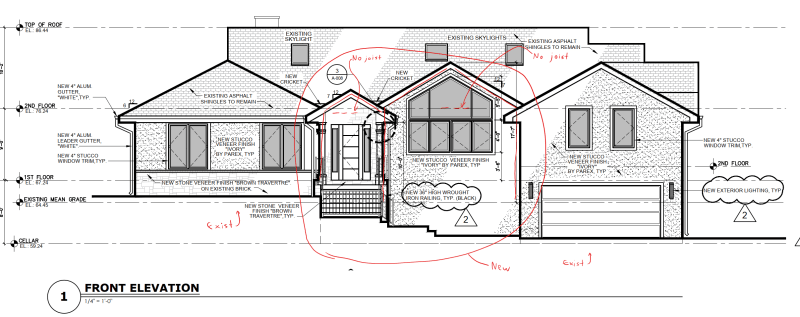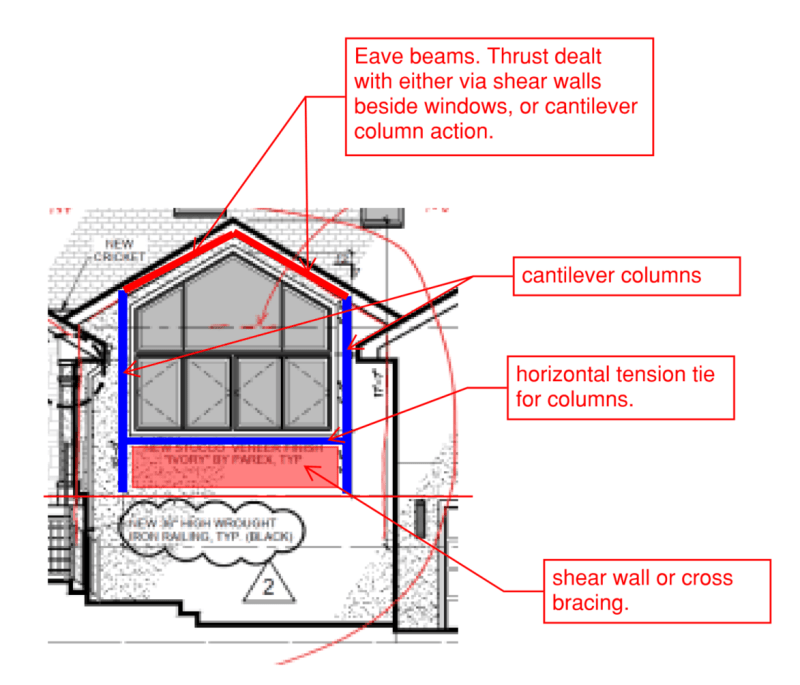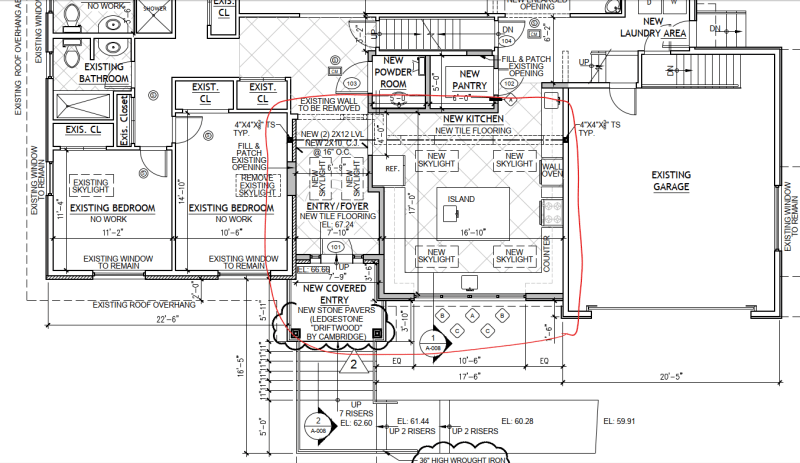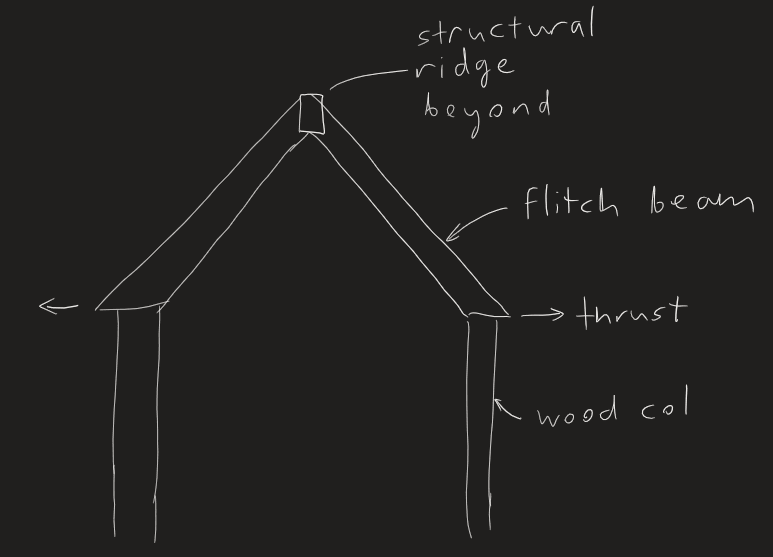milkshakelake
Structural
- Jul 15, 2013
- 1,109
Client wants an open gable roof. I don't like to do it generally because of lateral thrust; I'm more comfortable with having horizontal attic joists. Are there any references for how to design something like this? I was considering having some horizontal timber beams at like 8'-0" on center to deal with the thrust, beyond the window so the structure wouldn't obscure the facade.





